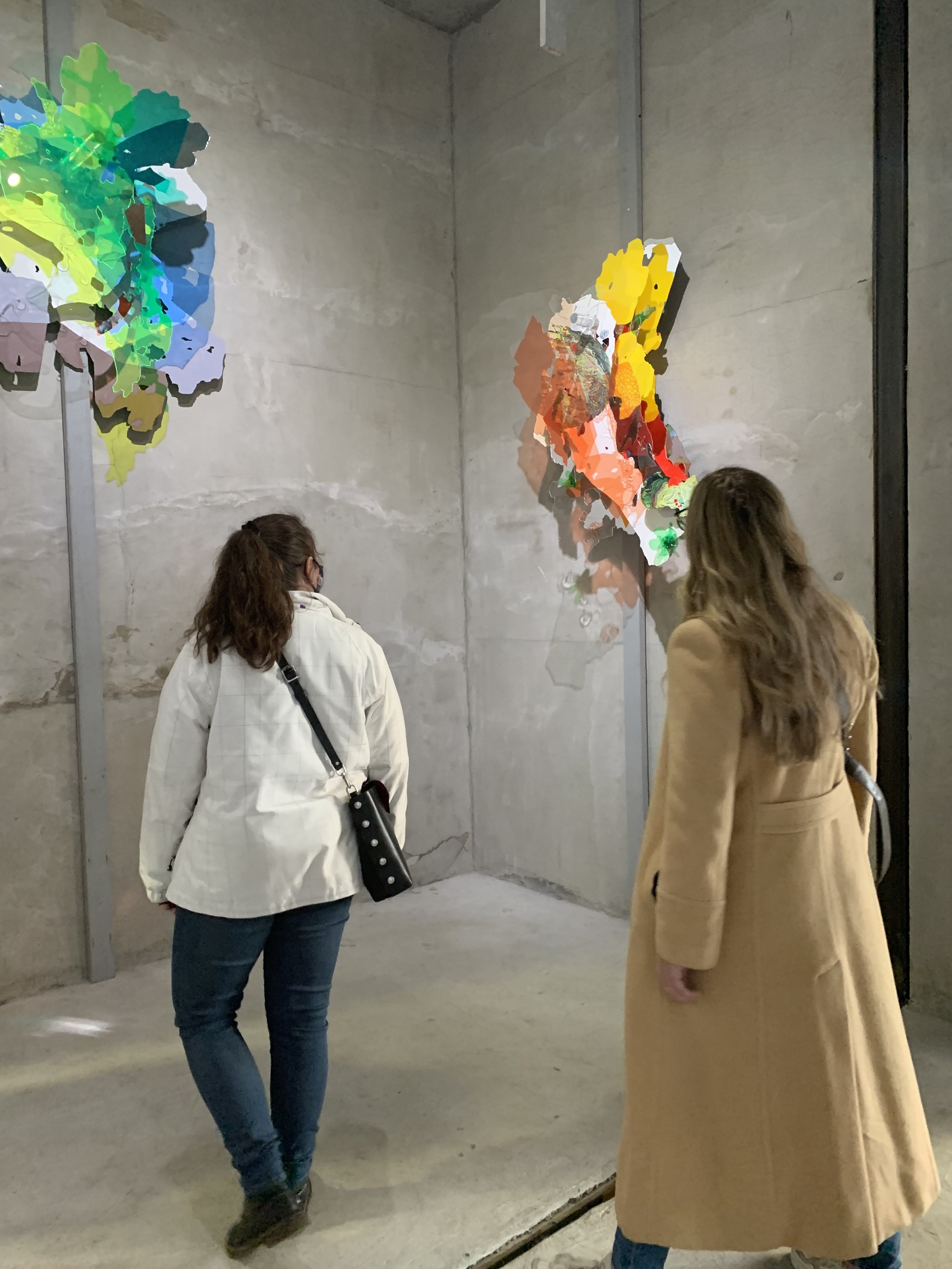
Exhibition Views
Through layered depths and shifting shadows, you've shown us how a single change in perspective reveals hidden dimensions, inviting endless discovery with each passing moment. Tina Villaveces, Yellow Studio
Hesse cuts elaborate shapes out of the acrylic sheet, layers them, separated by space to permit a number of different interactions, and mounts them on the wall. The shapes she uses derive from as many sources as one can imagine, geometry, geology, botany, cartography and so on. But the physicality of the pieces is only just the beginning. Light penetrates the colored Plexiglas casting colored shadows on the wall. Shadows from the various planar elements overlap to produce still more chromatic effects. Hesse belongs to a loose network of artists who curate and otherwise organize shows focusing on color. This association seems natural, organic and obvious. But to see Hesse’s work only through the lens of color is to miss its most significant qualities. The abstract shapes and their consequences in real space depend on projections, reflections, demarcations, combinations, and shadow. These are all states of being, more or less physical, more or less perceptible, and more or less tangible. While immersed in the sensuousness of its decorative qualities it is likely that phenomenological reflection may turn to philosophical insight. Gil Scullion, Real Art Ways
Cyanea. (on right) Installation view. Color Me. Curated by Roger Mudre. Silvermine Galleries. CT
Installation view. Living Color. Yellow Studio Gallery. Green Way shown on wall
Reception view- Living Color. Yellow Studio Gallery/ Green Sheild on left
Reception view. Living Color. Yellow Studio Gallery Installation view. Ruby Glow.
Sea Cluster. Detail view 1. Transformations. Curated by Carla Goldberg. Crown Gallery@Metro Arts. 2024
Exhibition View- Transformations curated by Carla Goldberg. Metro Arts
Installation view of Sea Cluster at Crown Gallery@Metro Arts. Curated by Carla Goldberg
Yellow Specimen (Sea Cluster) in Transformations at Metro Arts
Art Fair 14C. November 12-14, 2021 Installation view. Sway. Shift. Fluid State and Shimmer
Art Fair 14C. November 12-14, 2021 Installation view. Shimmer
Art Fair 14C. November 12-14, 2021 Cube C-3 Installation view- left to right: Celestial Sea #7, Deep Blue. Variation #4.1, Adrift (In Formation #3)
Art Fair 14C. November 12-14, 2021 Installation view.
Art Fair 14C. November 12-14, 2021 Installation view. Celestial Sea #7
Art Fair 14C. November 12-14, 2021 Installation view. Detail of Celestial Sea #7
Another Asterism. Somewhere in the Sequence at Real Art Ways. Hartford, CT
Another Asterism. Somewhere in the Sequence at Real Art Ways. Hartford, CT
In Formation. Mercy Gallery, Richmond Art Center at Loomis Chaffe.
In Formation. Mercy Gallery, Richmond Art Center at Loomis Chaffe.
In Formation. Mercy Gallery, Richmond Art Center at Loomis Chaffe.
In Formation. Rising. Five Points Gallery
In Formation. Rising. Five Points Gallery
Sway. Shift. Sea Garden at Vaiuso Growers














































